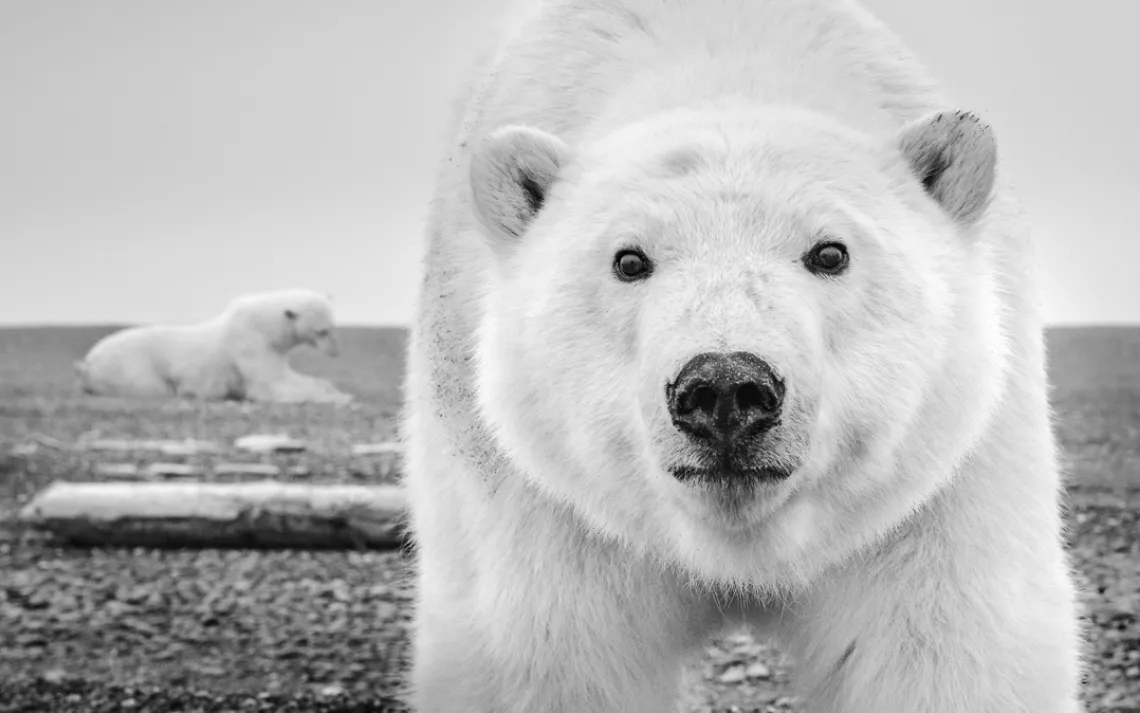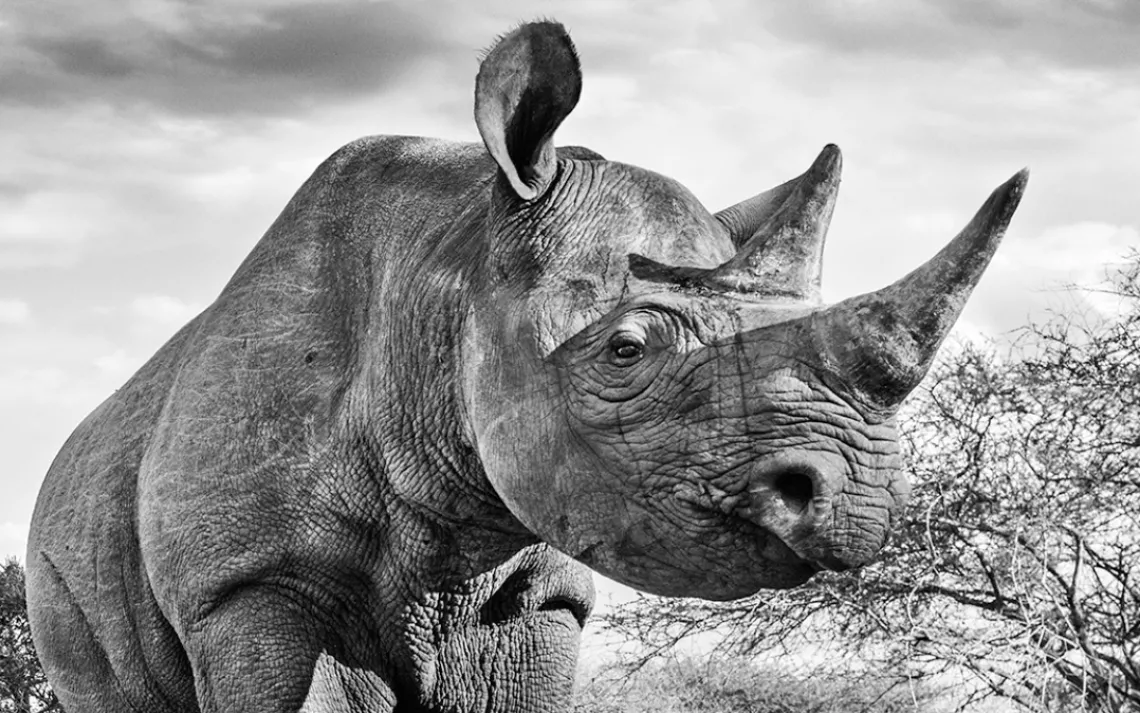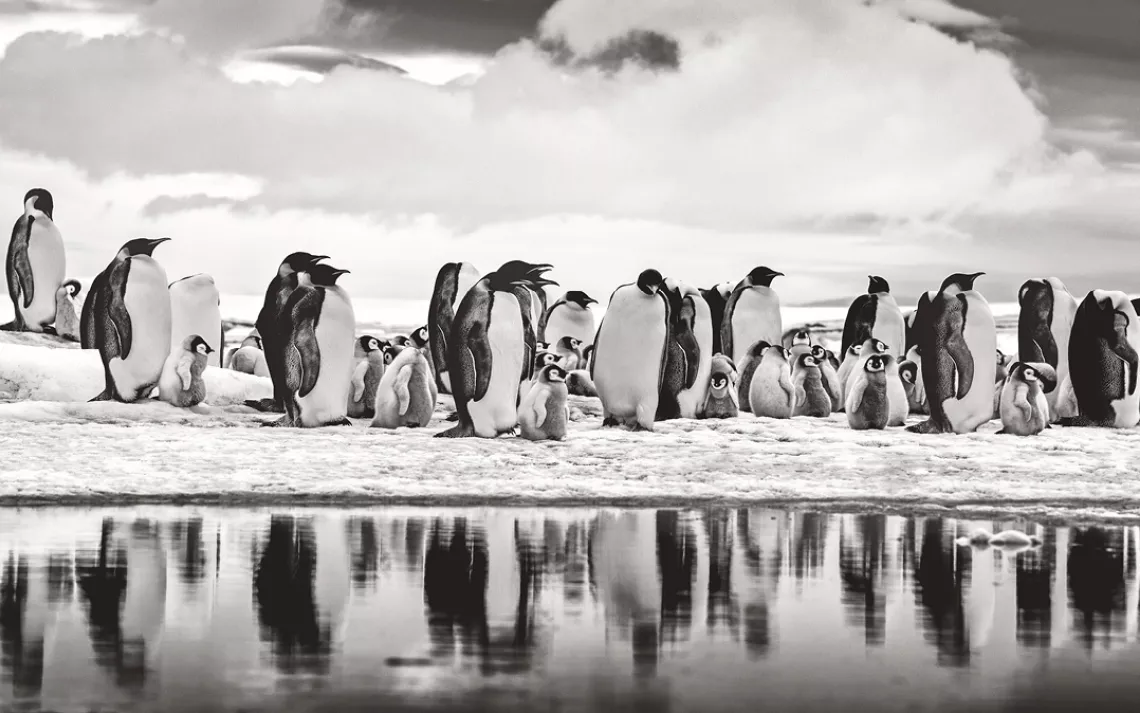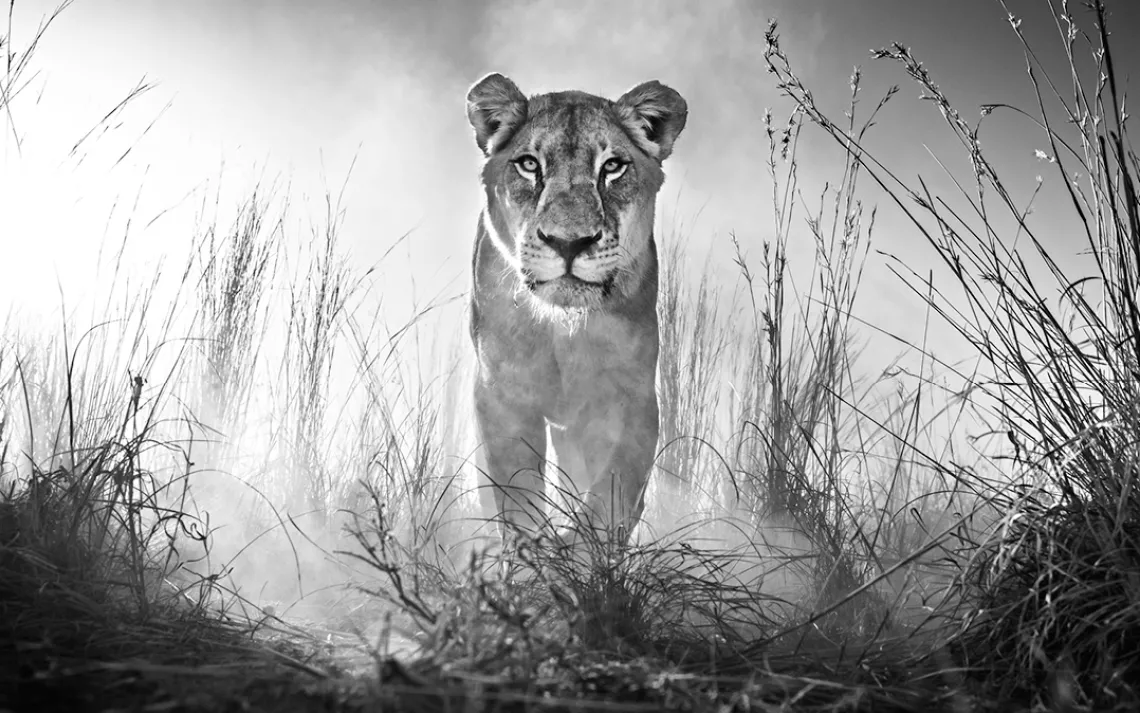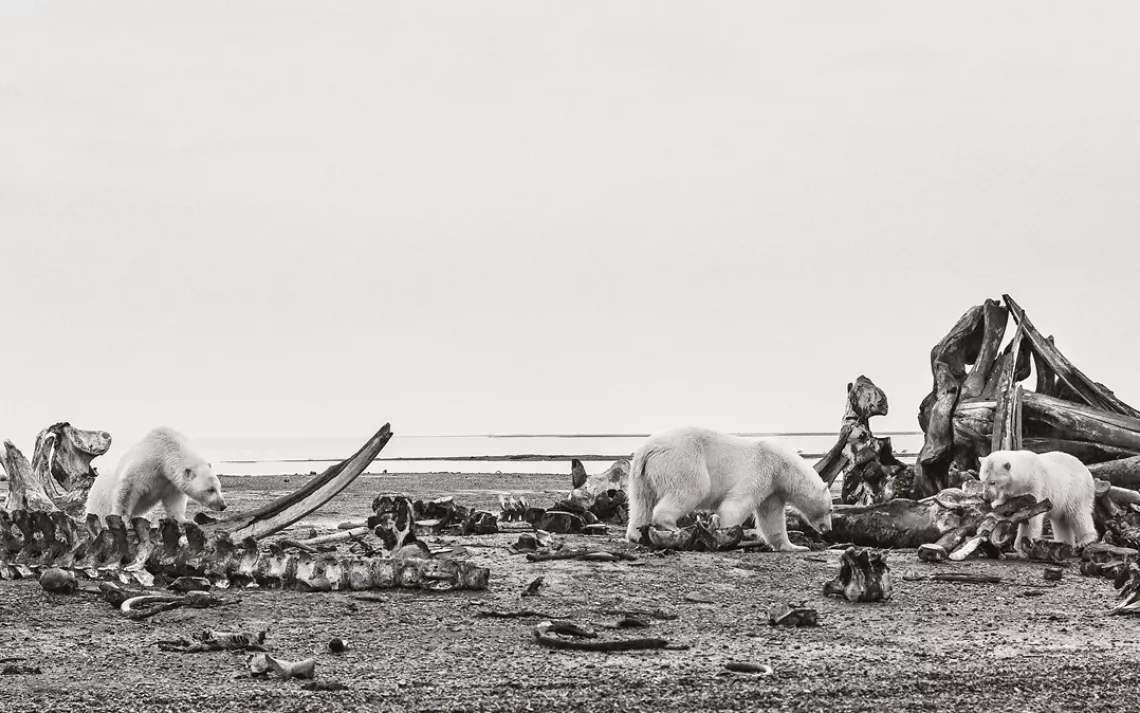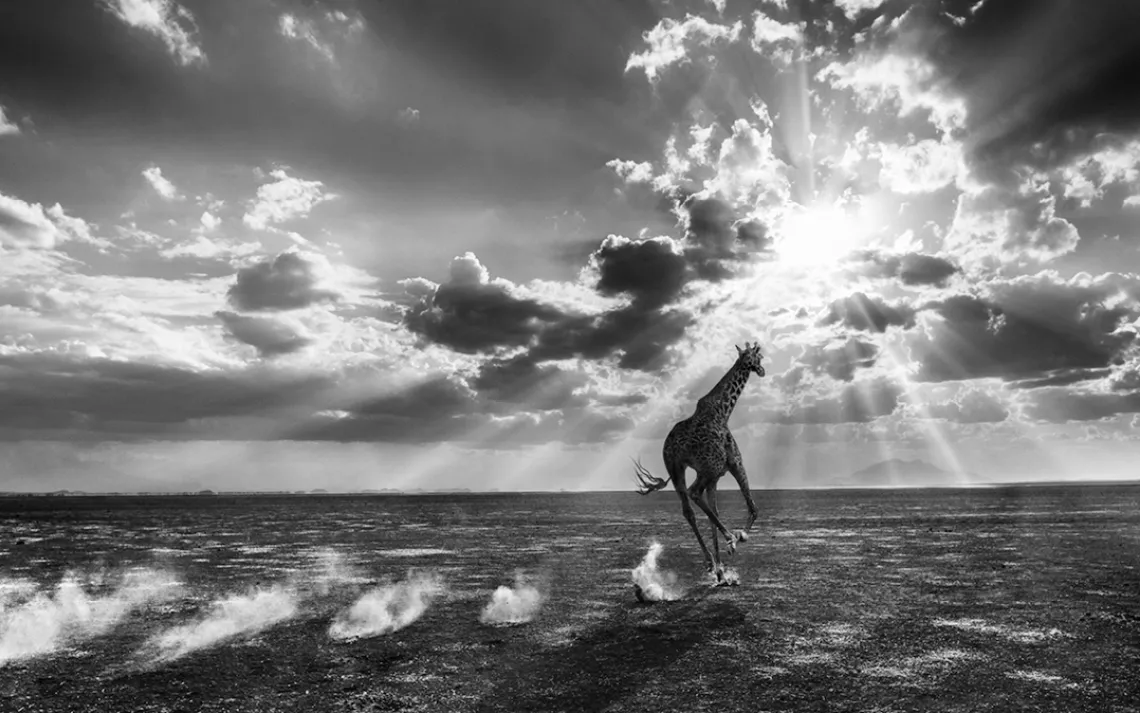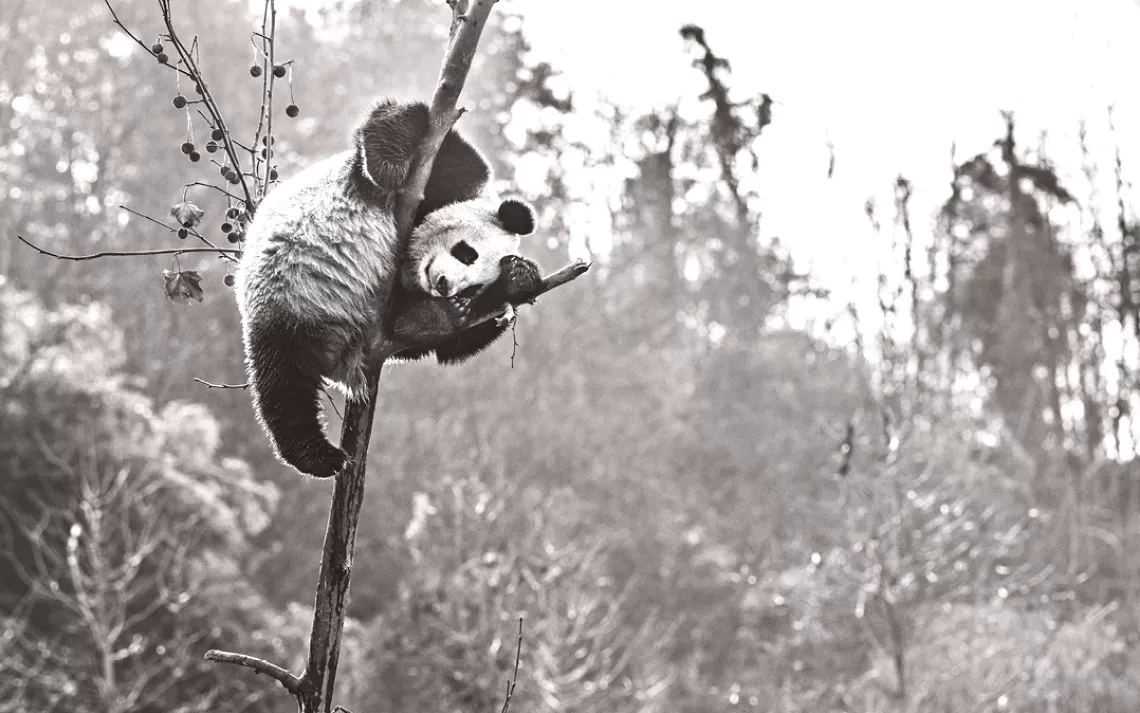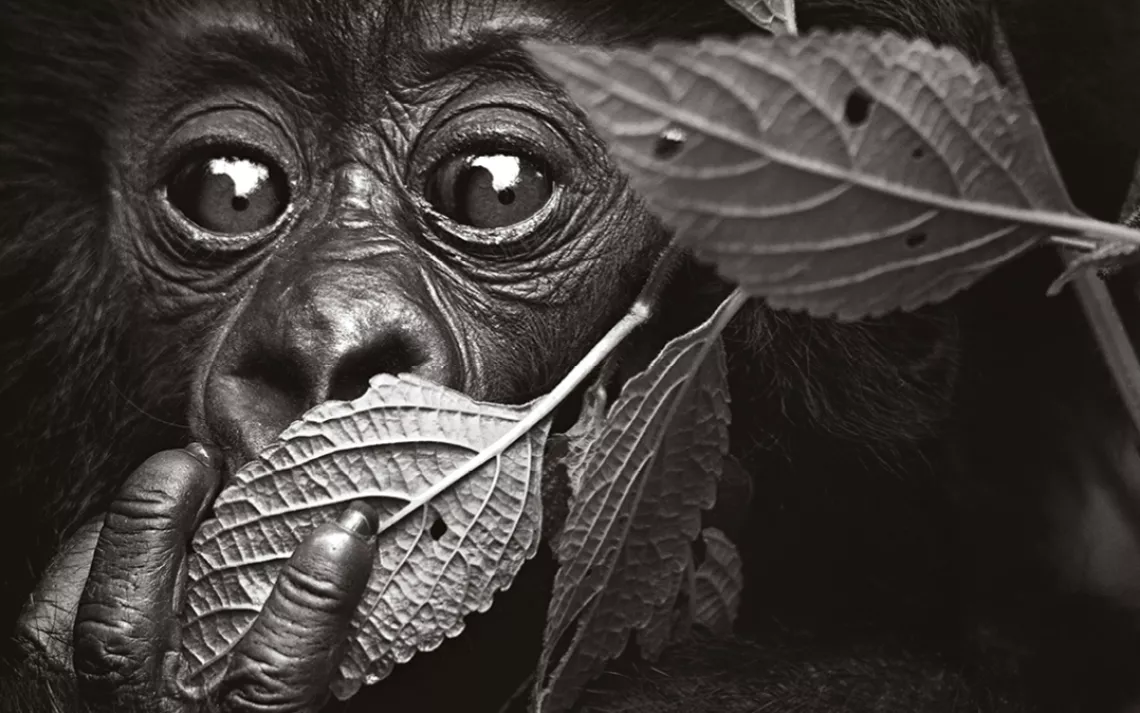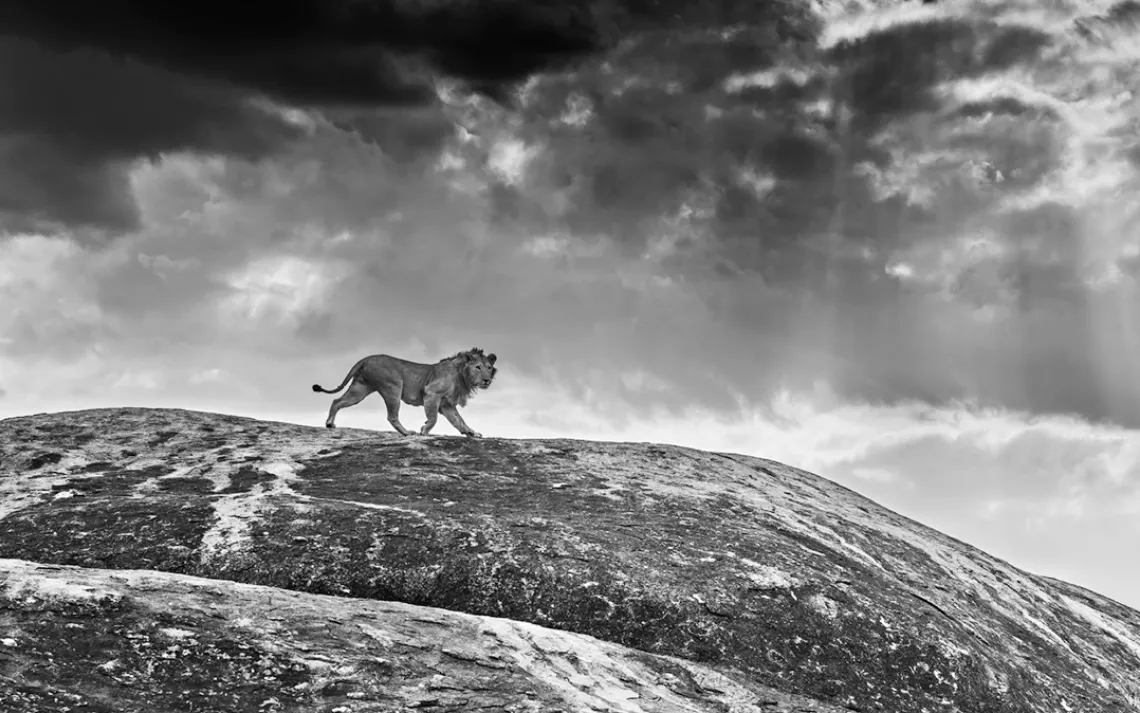The Truth of the Vanishing Wild
David Yarrow’s “Wild Encounters” is a triumph of conservation photography
Photographs by David Yarrow. Courtesy of Rizzoli.
“Photography isn’t about your camera; it’s about your soul,” says Scottish photographer David Yarrow. “As Ansel Adams once said, the lens looks both ways. It’s about your emotional investment in something—the narrative you want to offer to a scene.”
Yarrow is one of the best fine art photographers working in animal conservation today. His photographs render a kind of raw literacy to the truth of the vanishing wild. For his latest book, Wild Encounters (Rizzoli, October 2016), Yarrow traveled to multiple continents, from the frozen Arctic to the African desert, to capture the most iconic animals through which we often define the natural world—lion, rhinoceros, and elephant, to name a few. His goal with the book, as with much of his work, was to push beyond the staid, one-dimensional portraits that can be common with wildlife photography. The result is a triumph of both artistic mastery and emotional affect—a portfolio of compelling, visually arresting pictures that afford us the opportunity to fully grasp both the magnificence of animals in the wild and the threats they face in the modern world.
To achieve the remarkable intimacy so distinctive of his work, Yarrow does away with the telephoto lens. Instead, he favors wide-angle shots with remote-control technology and what he calls “occasional bits of bravery.”
“You can’t get into a person’s character with a long lens,” he told Sierra. “Why should you be able to use one to get into the character of an animal? I’ve just tried to find ways around that.”
Many of the animals featured in Wild Encounters are those through which we are often introduced to our world—whether in children’s books and drawings or song. They also happen to be the most endangered. A combination of climate change, habitat loss, and illegal poaching has decimated populations of elephant, rhino, and lion. The South China tiger, Sumatran rhino, black rhino, and mountain gorilla are all now considered critically endangered.
Yarrow’s goal with Wild Encounters was, in part, to elucidate for readers the collective responsibility we have toward protecting these animals, and the mandate we share to be good stewards of the earth. “We’ve been poor tenants of the planet, and I wanted to express that,” he said. “The world is an extraordinary diverse planet, and we’re all tenants.”
In one photo taken at the Mkomazi Game Reserve in Tanzania, Yarrow used a wide-angle lens and remote-control body to capture a black rhino up close. He set out to photograph the animal in its element without influencing it with his camera or his own presence. While the image is at once beautiful—the rhino’s lines, curves, and stippled skin are cast in stark relief to the surrounding chaparral—it is also intended to honor the many killed by poachers for its horn.
News stories of illegal poaching in Africa are common these days, but few people are likely to see firsthand just how gruesome the practice can be. In Wild Encounters, Yarrow includes a disturbing photograph he took of a medical team in the Eastern Cape of South Africa trying to save a black rhinoceros after poachers tore off nearly half the animal’s face for its horn. Rhinoceros horn is a hot commodity in Africa and Asia, often hawked as a libido enhancement. While the rhino was clinging to life, the team worked to install a metal plate to seal the wound.
“That was a very tough emotional experience, to be privy to that operation and be up close to the pain that rhino was in,” Yarrow said. “South Africa, Tanzania, particularly Kenya have a dreadful record with poaching. The number of rhinos poached in Krueger last year was about 1,500. That’s just one area. It is very much the epicenter of the problem.”
His portfolio on African lions is the result of a close partnership with other well-known animal conservationists such as Kevin Richardson, who helped him utilize remote-control technology while on scouts. The lion, one of the most beloved and iconic species on the planet, is also one of the most vulnerable. The U.S. Fish and Wildlife Service placed the African lion on the endangered-species list in 2015. “You don’t have to be breaking an atom to work out that our grandchildren are not going to be seeing lion in the wild,” Yarrow said. “That’s a desperate shame, because the lion is one of the first animals children get excited about growing up.”
While public awareness was part of the goal for Wild Encounters, Yarrow also just wanted to publish a beautiful book of photography that celebrated the characters and narratives of the wild (Amazon.com named it the "Best art and photography book of 2016"). In one particularly powerful image, a baby gorilla in Rwanda draws a leaf to its nose and gazes deeply into your eyes. In another, Yarrow, while in the North Slope of Alaska, got just close enough to a polar bear to photograph the finest filigree of dirt tracing the bristles on its face. He was so close to the animal when he shot the picture that his reflection is just barely detectable in its dark, piercing irises. “I think I’m the first person to ever do a selfie in a polar bear’s eyes,” he said.
Yarrow is the affiliated photographer for the Tusk Trust, which funds conservation projects and education programs across Africa. He donates 10 percent of all his sales to Tusk. Recently, he raised $750,000 for conservation projects in Africa.
 The Magazine of The Sierra Club
The Magazine of The Sierra Club
